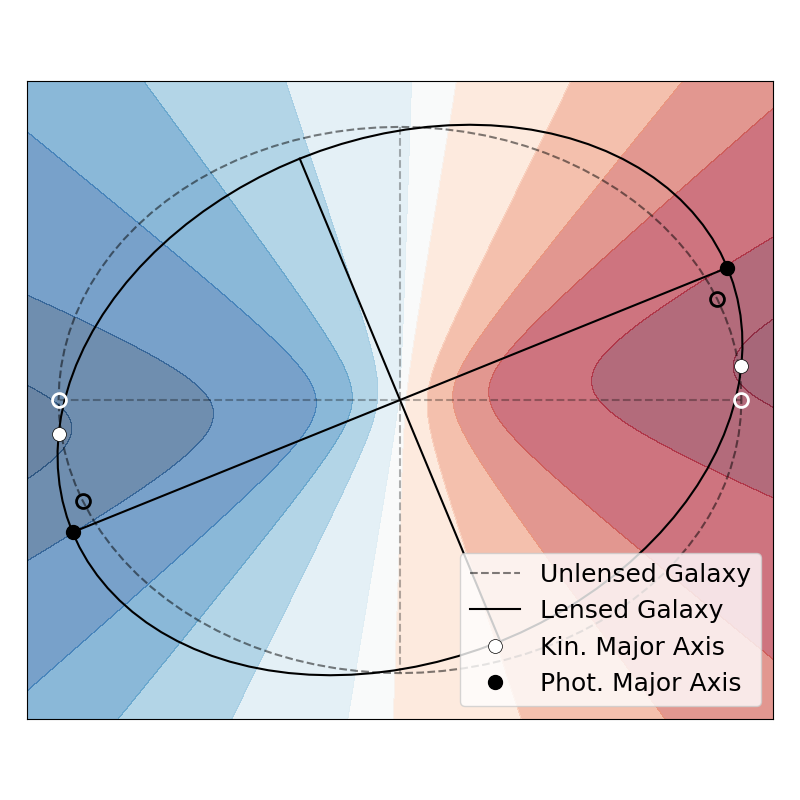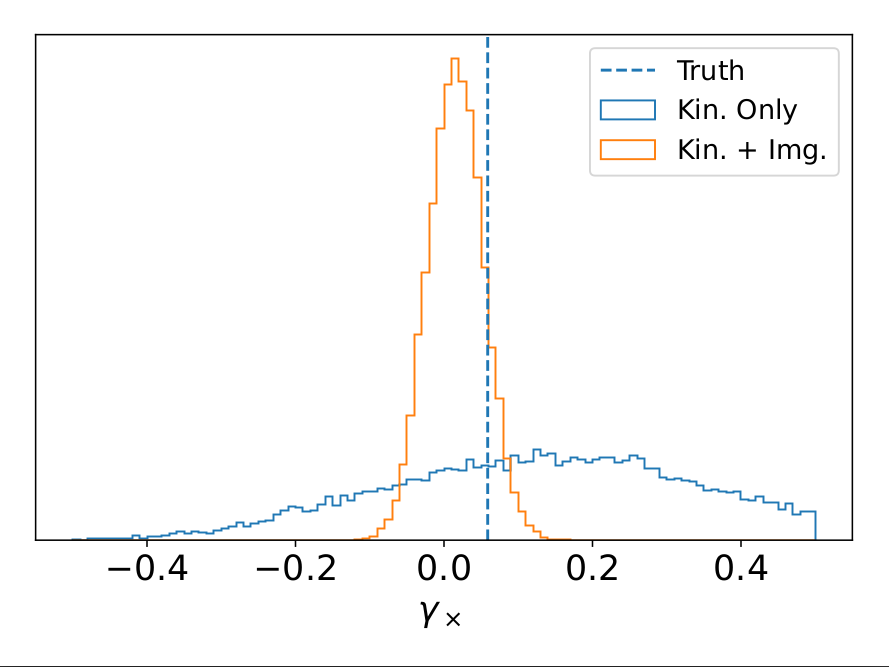What is Kinematic Weak Lenisng?
 When a galaxy is distorted via gravitational lensing, it undergoes a shear that the is usually parameterized as a rotation and elongation of the galaxy's elliptical shape. In the diagram, the dashed line represents an elliptical isophote of the galaxy pre-lensing, and the solid line is the shape of that isophote after it has been lensed. Conventional weak lensing surveys look for systematic alignments of many galaxies that can be statistically combined to characterize mass distributions.
When a galaxy is distorted via gravitational lensing, it undergoes a shear that the is usually parameterized as a rotation and elongation of the galaxy's elliptical shape. In the diagram, the dashed line represents an elliptical isophote of the galaxy pre-lensing, and the solid line is the shape of that isophote after it has been lensed. Conventional weak lensing surveys look for systematic alignments of many galaxies that can be statistically combined to characterize mass distributions.
However, the galaxy's kinematics behave differently. Since kinematic information is tied directly to the galaxy's intrinsic coordinate system, it is sheared in a way that can't just be parameterized as a rotation but must instead be understood as a shear (shown as colored contours). Kinematic weak lensing is the modeling of sheared velocity fields to recover the shear that has been applied to the galaxy.
I furthered this idea by introducing a new piece of information to the model: the mismatch between imaging and kinematics. The rotated and elongated elliptical isophote isn't actually the same as the pre-lensed isophote. It's a sheared ellipse that has different major and minor axes than before. The open white circle shows the original location of the galaxy's major axis on the isophote, and the filled black circle shows where it has moved to because of the lensing distortion. However, the kinematic information continues to be aligned with the original major axis of the galaxy, meaning that the velocity field is misaligned with the image.
If we can measure the difference between the kinematic major axis (filled white circle) and the photometric major axis (filled black circle), then we can determine how much the galaxy has been lensed.


